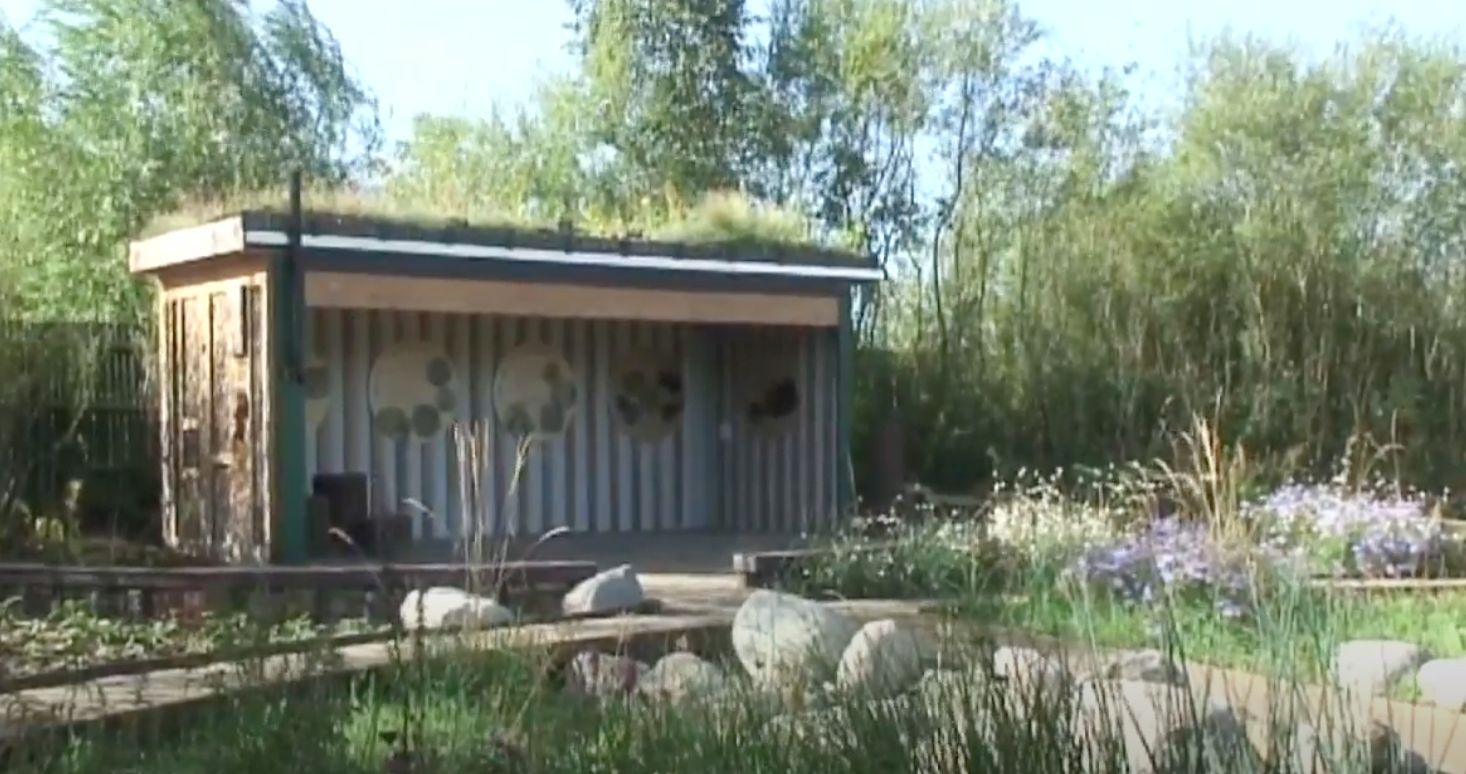How to make a rain garden

As our climate changes, the UK can expect long dry summers and short periods of heavy rain leading to flooding. A rain garden is designed to deal with both these extremes and to benefit both wildlife and people. Find out more and follow the guidance here from WWT to create your own rain garden.
What is a rain garden?
Rain gardens are, at their simplest, shallow hollows that collect rainwater. What makes them different from ponds or bog gardens is that the water is allowed to drain away into the soil, so they will be dry when they’re dry and wet when it’s wet.
- Rain gardens are extremely useful features to include in your garden
A good rain garden:
- Soaks up and stores surplus water, reducing the amount that runs off into drains, so helping to prevent flooding
- Helps reduce pollution – rain gardens are effective in removing up to 90% of nutrients and chemicals and up to 80% of sediments from rainwater runoff
- Uses clever water storage solutions making it less reliant on mains water and better able to survive periods of drought
- Uses plants that can cope with a variety of moisture conditions from droughts to floods
- Attracts and supports nature from bugs to butterflies, birds to bees
- Is visual and sensory, making it a great place for people too
Our gardens are very important for wildlife. There’s actually a greater acreage of gardens than nature reserves in England.
Creating a rain garden
Plan your rain garden
To plan your rain garden, picture your property from above looking down. It is most likely a mosaic, possibly containing roofs, patios, driveways and paths – all often hard surfaces – and lawns, flower beds, ponds and so on – all soft surfaces that will hold rainwater to some extent. Drainage has traditionally been designed so that the rain running off hard surfaces goes straight to the municipal drains. When it really pours down, this can cause sewage to overflow with devastating effects. But even without sudden deluges, the extra water in the surface system increases flooding pressure on the surrounding countryside.

Visualise or sketch out your property looking down
Stop the run-off
First, you need to collect rainwater from impervious surfaces like rooftops, driveways and patios.
Green roofs are a great way to do this as they absorb water and release it slowly down to the garden. They also attract insects, birds, bees and butterflies.
Or, you can use a water butt to collect water. They can be easily attached to the downpipe of any gutter.
Soak it up
The rainwater is then allowed to run into a rain garden, which is designed to temporarily hold and soak up the rainwater so reducing the risk of flooding.
Positioning planters under downpipes is a great way to intercept and soak up water from your roof.
Rills and channels can help you divert the water to where you want it. They can also make fun features for kids to play with and they look and sound fantastic.
Using porous paving like paving stones with gravel or planting in the gaps is a great way of reducing runoff and allowing water to soak down to the soil beneath.
Good rain garden plants
- A few good options for rain garden plants
A rain garden is dry most of the time. It typically holds water only during and following rain, and they drain within 12 to 48 hours, so you need to choose plants that can survive a range of moisture conditions. Some colourful suggestions include:
- Yellow flag iris (Iris pseudocorus)
- Daylily (Hemerocalis)
- Purple loosestrife (Lythrum salicaria)
- Bistort (Persicaria bistorta)
- Coneflower (Echinacea pupurea)
- Meadowsweet (Filipendula ulmaria)
- Primrose (Primula vulgaris)
- Penstemon (Penstemon digitalis)
- Granny’s Bonnet (Aquilegia vulgaris)
Even better for wildlife
Why not take your wildlife garden one step further and learn how to make a creature tower or habitat wall with WWT landscape architect Simon Rose?
Get ideas for your own rain garden
The Royal Bank of Canada Rain Garden at the London Wetland Centre was designed by Dr Nigel Dunnett to showcase rain gardening and inspire others to do the same. It is a great example of how rain gardens can work to save water, help wildlife and look good too.
It’s not the only place to go for inspiration. A Chelsea garden, also designed by Dr Dunnett, has been carefully rebuilt at WWT Slimbridge Wetland Centre in Gloucestershire, so visitors can enjoy some quiet contemplation in a rain garden and hopefully leave inspired to go create their own.
Another award-winning boreal Chelsea garden, also funded by RBC, was designed by Charlotte Harris and brings a North American twist to Martin Mere Wetland Centre, giving visitors a slice of the vast sub-arctic Canadian wilderness.
Washington’s HSBC Waterlab garden is an award-winning sustainable space. The clean, clear, gravel filtered rainwater feeds a pond rich in wildlife. If the pond overflows, a series of damp hollows temporarily store the excess rainwater.
For more about our partnership with WWT visit our partnership hub here




















